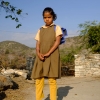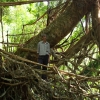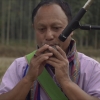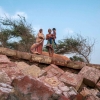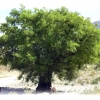An erstwhile hunting reserve of the Cooch Behar Royal Family and the Raja of Gauripur, Manas National Park (MNP) has now acquired the status of a UNESCO World Heritage Site. It is arguably the only national park whose landscape diversity ranges from Bahabar and Terai formations to wet alluvial grasslands. The importance of Manas National Park can be gauged from the fact that it is blessed with the rare privilege of being a national park, a Project Tiger reserve, a biosphere reserve and an elephant reserve. This wildlife conservation area is home to 21 animal species listed in Schedule 1 of India’s national Wildlife (Protection) Act 1972. MNP is believed to be the only remaining habitat for pygmy hogs and hispid hares. However, it shouldn’t be studied in isolation because this national park with an area of 950 sq km provides many resources to a significant number of people settled in and around it (Horwich at al 2010). The following article is based on my fieldwork in March 2014 in the fringe villages of Panbari (western range), Bansbari (central range) and Bhuiyapara (eastern range). It was a qualitative study and used research tools like focus-group discussions and in-depth interviews for data collection.
Villages near Manas National Park
Apart from Agrang, the only forest village in the core of the national park, there are more than 50 other villages on the fringes of the park. These villages are distributed among the three ranges within the park: Panbari, Bansbari and Bhuiyapara.
Each of these fringe villages faces distinct problems and all are vulnerable in equal measure. The forest-dwellers are deprived of basic life-sustaining infrastructure, especially schools, electricity, health centres, water, roads and sanitation. Owing to these constraints, the movement of the villagers is restricted to the national park for collecting non-timber forest products. Health issues are rampant in these areas, with a large chunk of population falling prey to malaria and dysentery.
Villagers have been subjected to systemic exclusion from the mainstream and hence, most of them are woefully unaware of the new legislations related to the Forest Department. They find themselves at the wrong side of the law and are being tagged as encroachers. The locals, who look at the forest as an 'open-to-all' property, have to restrict their movement because of various prohibitions. This has created a precarious situation for the villagers since they depend on the national park to meet their basic needs. The forest-dwellers suffer from an identity crisis as the legality of their status as villagers of this region has been questioned time and again. The conflict over who has the right to resources has been perennial. For instance, villages like Dihira, which have migrant Bodo communities, were severely affected by the conflict for BTAD (Bodoland Territorial Area Districts). Similarly, villages like Narayanguri continue to face ethnic conflicts rendering them helpless and increasingly dependent on the forest.
Ecological Stress on Manas National Park
According to reports from the NGOs working in community-based conservation, the ecosystem of Manas National Park has come under great stress. Rapid surge in human population has been directly proportional to the pace at which environmental degradation has taken place. Increased demand for natural resources has depleted forest resources, with the forest cover shrinking fast in past decades.
On the environment front, the region is prone to floods and soil erosion due to dams and changing of the river's course. Flooding has a cascading effect, since options for alternative livelihoods get restricted in the absence of livestock-rearing opportunities. That compels the villagers to increase their dependence on the forest, making the region vulnerable to stone-cutting and sand and river mining. Large dams in Arunachal Pradesh and Bhutan have been proposed. However, various advocacy groups have raised concerns over ecologically harmful and unsustainable dams in the Eastern Himalayas. Their fears are not unfounded. Manas National Park is proven to be at risk of flood due to these dams. For example, large swathes of land in Assam get inundated when Kuri Chu dam releases excess water during floods. A significant area of the park, including the forest cover, has already been washed away.
Wildlife activists and environmentalists have also raised concern over the sheer neglect of buffer areas of Manas National Park since it is in these areas that illegal activities are rampant due to lack of monitoring. While the core area has 38 anti-poaching camps, there isn’t any such arrangement in the buffer areas covering an area of 2800 sq km. The first step to buffer zone management, as recommended by the Wildlife Institute of India (WII) and the National Tiger Conservation Authority (NTCA), is to shift the ownership of Manas National Park from the Forest Chief of the Bodoland Territorial Council to the Field Director of Manas National Park. The next steps, as proposed, include addressing the threats to wildlife due to the development of highways and other ecologically unsustainable activities, including mining.
Civil Unrest
While the villages languish in economic backwardness, what has made life even more difficult for the residents is persecution at the hands of Bodo militants. At least 100 people were displaced and more than 40 Bengali-speaking Muslims killed on May 2, 2014, when militants opened fire in the villages near Manas National Park. The attack was aimed at Bengali-speaking Muslims in Khagrabari and adjoining villages.
The civil unrest in the '80s and early '90s has had a tremendous impact on the local wildlife. Most militants engaged in illegal logging and poaching to fund their activities. The park lost almost 90 per cent of its rhinos (close to 100) and a large number of swamp deer and wild buffaloes as a result of the unrest. All these happened in little over a decade before the Indian Army flushed out militants and the park limped back to normalcy (Goswamy and Ganesh 2014).
Role of NGOs in Involvement of Local Communities
In a bid to understand the human-nature linkages to arrest the depletion and degradation of finite resources and solve the socio-economic problems of the community residing on the fringes, various NGOs and advocacy groups have been organizing workshops and training programmes.
Ranging from fishery farming and dairy farming to bee-keeping and weaving, the locals are being trained in activities that will help in making them self-sufficient. One of the objectives of these trainings is to prepare those living on the fringes of MNP in earning their livelihood. Some NGOs are also trying to involve the villagers as protectors by motivating them to save the forest. The local communities are being engaged to step up anti-poaching efforts so that the wildlife can flourish and they can also earn their living.
Conclusion
Manas National Park can be understood as a good example of a site where a dispute can arise between fortress conservation, with the ‘gun-and-guard approach’, and community-based conservation. Both approaches have been successful in conservation in some cases and have seen failure in some other cases. However, in the community-based conservation approach, which is a rights-based approach, the social cost is also given importance. In the absence of human welfare being taken into account, issues other than social impacts, like poaching would also affect the conservation procedure. If a cost-benefit analysis is done for these two approaches then it has to be done for biodiversity, economy and social impacts. Hence, solely from the point of view of conservation, the fortress approach might appear to be beneficial, but from a broader perspective, the community-based approach may be more effective. A community-based conservation approach is a bottom-top approach which works at the grassroots level, and therefore, sustainable economic growth together with communities working for ecological goals can lead towards conserving the ecosystem as a whole.
References
Horwich, Robert H., et al. 2010. ‘Community Protection of the Manas Biosphere Reserve in Assam, India, and the Endangered golden langur Trachypithecus geei’, Oryx 44.02: 252–60.
Goswami, Rajkamal, and T. Ganesh. 2014. ‘Carnivore and herbivore densities in the immediate aftermath of ethno-political conflict: The case of Manas National Park, India’, Tropical Conservation Science 7.3.




